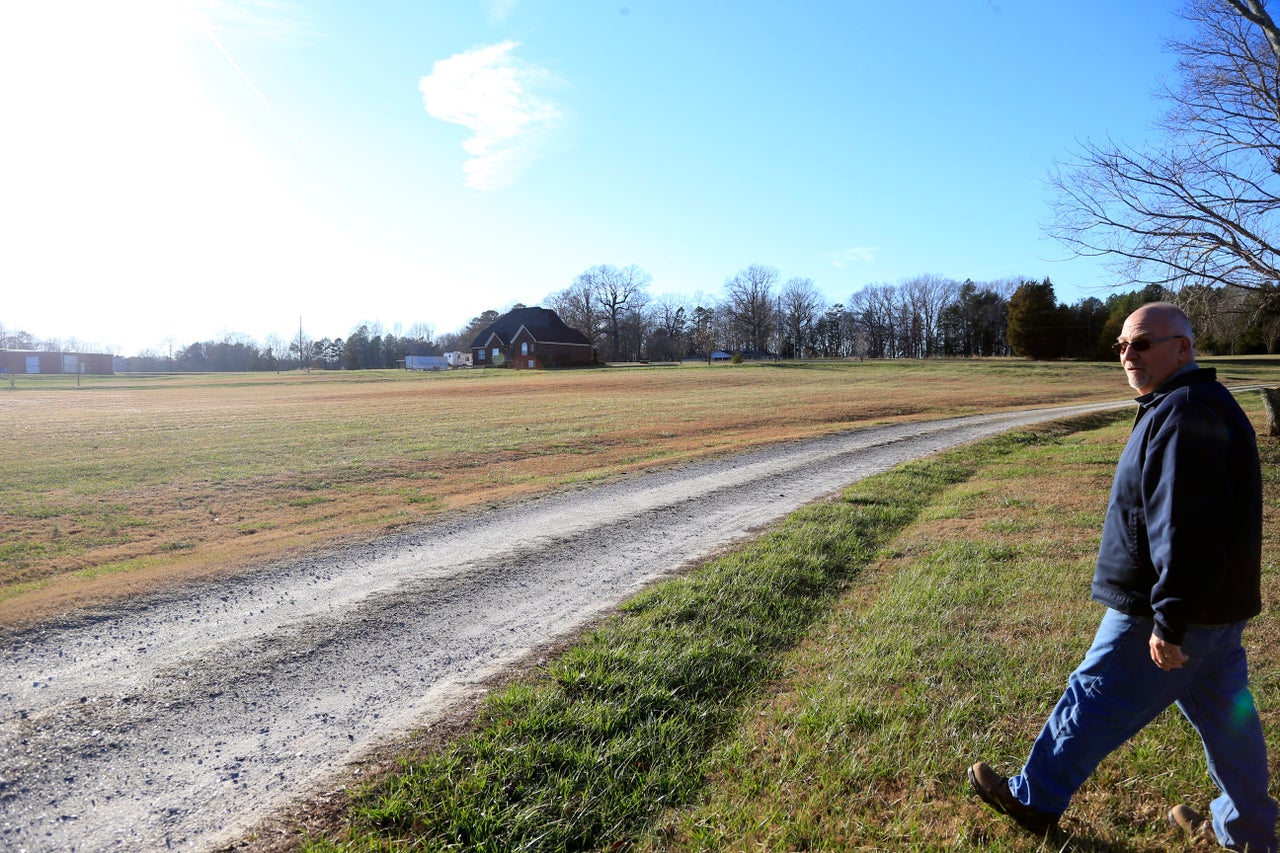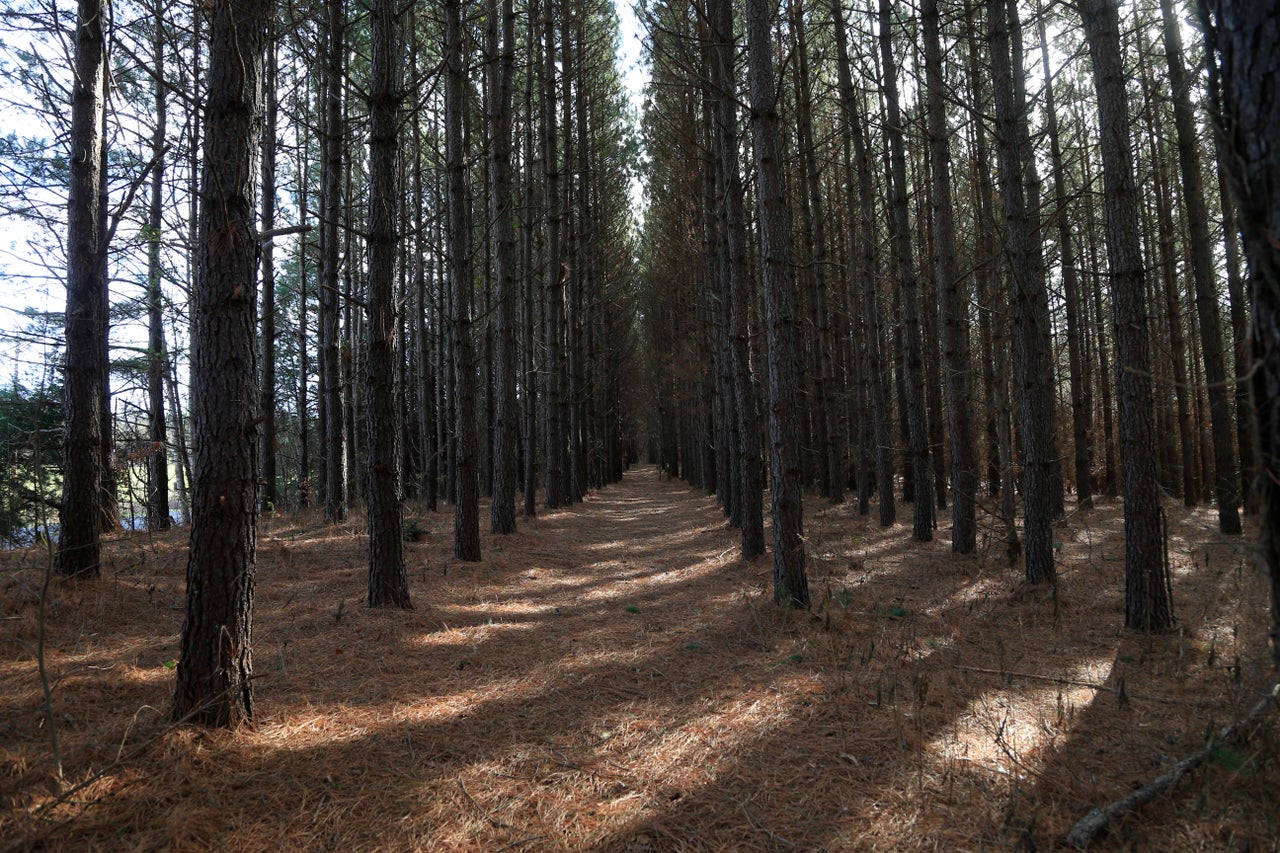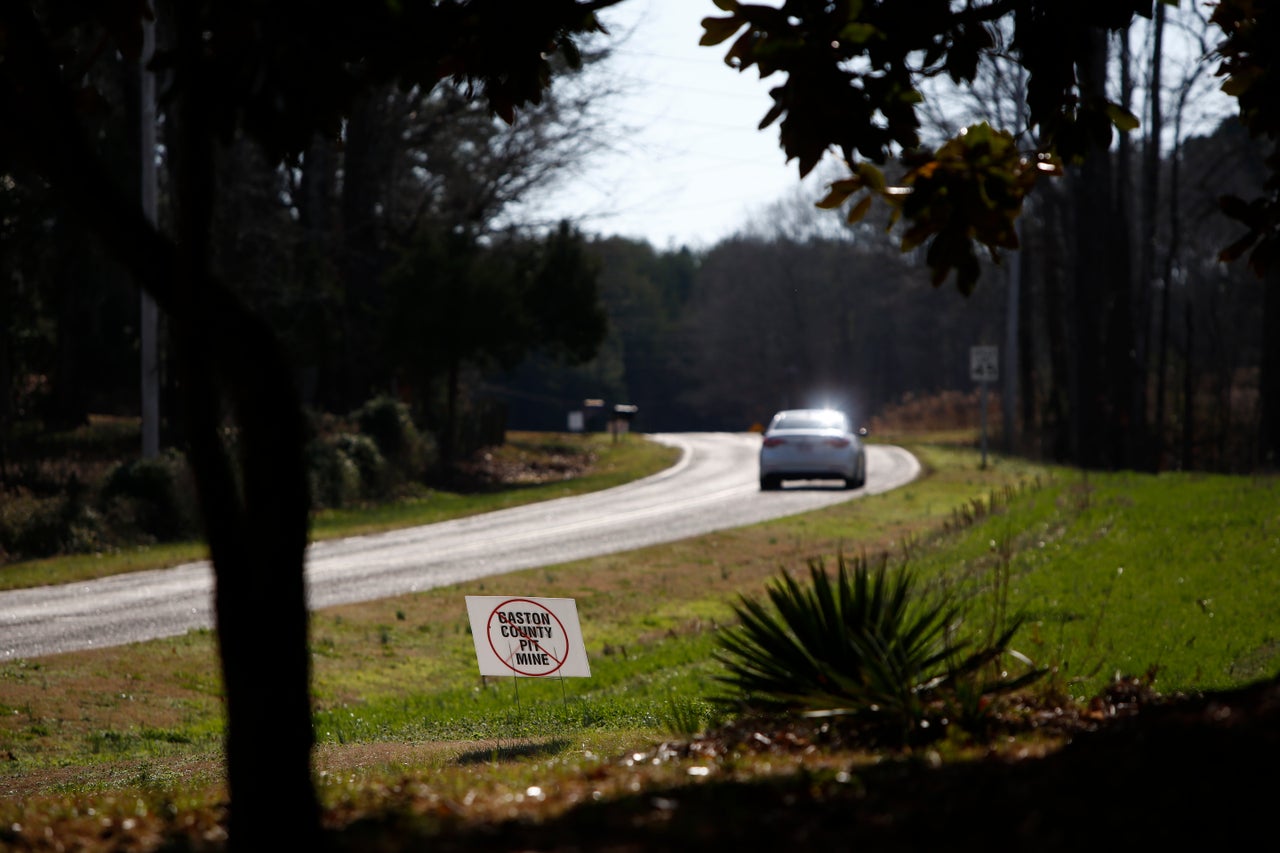This story was published in collaboration with The Assembly, a digital magazine about the people, institutions and ideas that shape North Carolina.
GASTON COUNTY, North Carolina — Brian Harper opened the door to his back porch, stepped outside, and inhaled the brisk air. Exhaling, he stretched his arms out wide as if to embrace the bucolic scene before him.
Moments like this were sacred — and, he feared, fleeting.
On that late afternoon in early January, the sun cast a golden tint over the brown frost-nipped fields behind the Harper family’s stately brick home. Just a few hundred feet away was the red barn containing his workshop, where he makes precision gears for clients like Duracell, Dart Container Corp. and Nestlé.
Harper, 54, wanted to catch the last bit of light on his quiet stretch of farmland about 45 minutes northwest of Charlotte. He crunched onto his icy lawn and cut a diagonal path across his neatly mowed 12 acres. Past the neighboring home where his sister-in-law and her family live and down a gentle slope, he came to a stop on the squishy banks of a brook. He crouched down and pointed to a small mound of mud — a crayfish burrow. Before long, Harper said, a herd of deer would make its nightly visit to drink and munch on greenery the recent cold snap hadn’t yet claimed.
“This, to me, is paradise,” Harper said. “And all this, when they start mining, will disappear.”

Brian Blanco for HuffPost
Beneath these rolling hills lies what many investors now call “white gold.” And just beyond Harper’s tree line, the mining startup Piedmont Lithium wants to dig up to four 500-foot-deep pits to pull out the lithium reserves that once made Gaston County the world’s top source of the soft metal now used to make batteries for cellphones and electric vehicles. If permits and local zoning changes clear the way for the project, Piedmont could begin digging as early as next year, making this likely the first major new supply of American lithium since demand started surging over the past two years.
The mine has become an unlikely microcosm of a clean-energy conflict starting to take center stage in the debate over how to avert catastrophic global warming. To preserve a planet with hospitable weather patterns resembling what we see today, the world needs to rapidly phase out oil, gas and coal. But quitting fossil fuels means dramatically increasing the supply of minerals such as lithium, nickel and cobalt that make it possible to do with electricity what today requires igniting liquid carbon. And in places from Chile to Serbia, Nevada to now North Carolina, the clashes erupting between mining companies and the people who live near resource deposits are increasingly known as “lithium wars” and could dictate how that transition happens.
Lithium’s Tar Heel Foothold
Few places in the U.S. better exemplify the demand for battery metals than the American South, where the power grid is especially dirty, the lack of public transit makes personal automobiles necessary, and labor laws that are unfavorable to unions have helped attract car factories.
Last December, Toyota unveiled plans for a $1.3 billion battery plant in Greensboro, North Carolina. In March, Vietnamese electric-car maker VinFast announced it would build its first U.S. plant in North Carolina. This week, Hyundai confirmed Savannah, Georgia, as the site of its next big electric vehicle factory. The South Korean battery behemoth SK Innovation was already building its manufacturing hub in northern Georgia to supply lithium packs to the Tennessee factories building Ford’s electric F-150 and Volkswagen’s signature crossover models.
Beneath the soybean fields, pine stands and trickling streams of this county is a uniquely pure vein of minerals containing the most valued type of lithium on the market today. The price of the metal overall surged nearly 500% between 2021 and 2022, with forecasts showing demand is set to increase fourfold by the end of the decade. Lithium hydroxide, the type of finished product Piedmont would sell, sold in mid-May for as much as $72,000 per metric ton — a 127% increase since the start of the year.

Brian Blanco for HuffPost
But as the Biden administration and lawmakers from both parties push to ramp up domestic mining and processing in hopes of breaking China’s near-monopoly on the metal, local opposition is mounting. In Nevada, Native American tribes, ranchers and environmentalists complain that a big proposed lithium mine in the desert threatens to desecrate sacred land, deplete a drought-dried water table, and kill off rare plant species. In California, plans to extract lithium from the inland Salton Sea have stoked concerns over air pollution and toxic contaminants. Projects to mine copper, nickel and rare earth minerals — all critical ingredients to a post-fossil future — have faced similar complaints across Western states.
With the roughly 3,200 acres of land it now controls, Piedmont vowed to make this county — which in the 1950s was the epicenter of global lithium production — the home of “the world’s most sustainable lithium project.” The company is spending millions on infrastructure and equipment that it said will set a new standard for reducing air pollution and noise from a mine of any kind. It has pledged to treat and recycle water, help neighbors whose water wells run dry as a result of the mining, and pay local employees salaries about 50% higher than the county average.
“You couldn’t possibly design our project in a more environmentally friendly way — our team is smart, experienced and cognizant of what the rules are,” said Keith Phillips, 62, Piedmont’s chief executive and a former mining banker on Wall Street. “We think it’s the best lithium asset on the planet, and we think the community should be inordinately proud of it.”
But that sales pitch is falling flat with many residents here, who fear the mine dooms a community with families who trace their roots back centuries. Unlike projects out West, which are largely located on sparsely populated tracts owned by the state or federal governments, Gaston County has more than 610 people per square mile — nearly seven times the average U.S. population density. There’s no municipal water supply, and the mine will draw millions of gallons from the same water table that replenishes local wells and streams. Residents here worry about pollution: Small-scale mining from decades ago left behind toxic waste. And in a county close to one of the nation’s fastest-growing financial capitals, property owners wince at how much value their land could lose if there’s a mine practically in their backyard.

Brian Blanco for HuffPost
Piedmont, by its own admission, has been slow to reach out to the community, many of whose members now see the company’s executives as opportunistic carpetbaggers. In a place where children bear surnames etched on gravestones older than the United States itself, many residents worry the horizon for any benefits from the project is short. If mining lasts only 30 years, as company statements have suggested, or alternative battery chemistries make lithium-ion packs obsolete, they fear their sacrifices will have only enriched Piedmont’s shareholders.
Now a coalition of those neighbors wants to stop the project in its tracks. For months now, signs calling for Piedmont to leave have fluttered up and down the country roads that crisscross the county. Fearing state and federal mining rules are stacked in favor of permitting the project, these locals have focused on what they see as the most vulnerable chokepoint: persuading the Gaston County Board of Commissioners to reject Piedmont’s bid to rezone the area from agricultural to industrial use. At public hearings so far, these opponents of the mine outnumbered supporters.
Both sides of the feud see it as an existential fight. If wells dry up, if contaminants make it less safe to live here, or if the wildlife and landscapes that define the area disappear, many lament the possibility of becoming the final generation of their families to call this place home. But others worry that if a state-of-the-art mine can’t move forward in a place with a history of lithium production at a time when political and market demand is this high, then the chances of seriously slashing fossil fuel use in the world’s largest economy look slim.
“Right now, the battery plants that are there in the U.S. are dependent on imports,” said Caspar Rawles, an analyst at the British-based battery supply chain research firm Benchmark Mineral Intelligence. “Having a domestic, secure supply of lithium is critical. And obviously Piedmont is one of those projects.”

Teresa Kopec via Getty Images
Old Rocks, New Demand
Long before there was a Gaston County or a United States — hundreds of millions of years ago — the tectonic plates beneath northern Africa and North America collided, forming the Appalachian Mountains. Molten magma oozed into cracks in the Earth’s crust and formed veins of igneous rock geologists call pegmatite containing a mineral named spodumene, the ore that is processed into lithium.
The deposit, known as the Carolina Tin-Spodumene Belt, is one of the oldest and most economically important formations of its kind in North America. The belt is roughly 25 miles long, snaking northeast from the South Carolina border to Lincolnton, North Carolina. The thickest portion, barely 2 miles wide, is in Gaston County, where outcroppings of the yellowish,…
Read More:The Lithium War Next Door
2022-05-22 11:00:10
